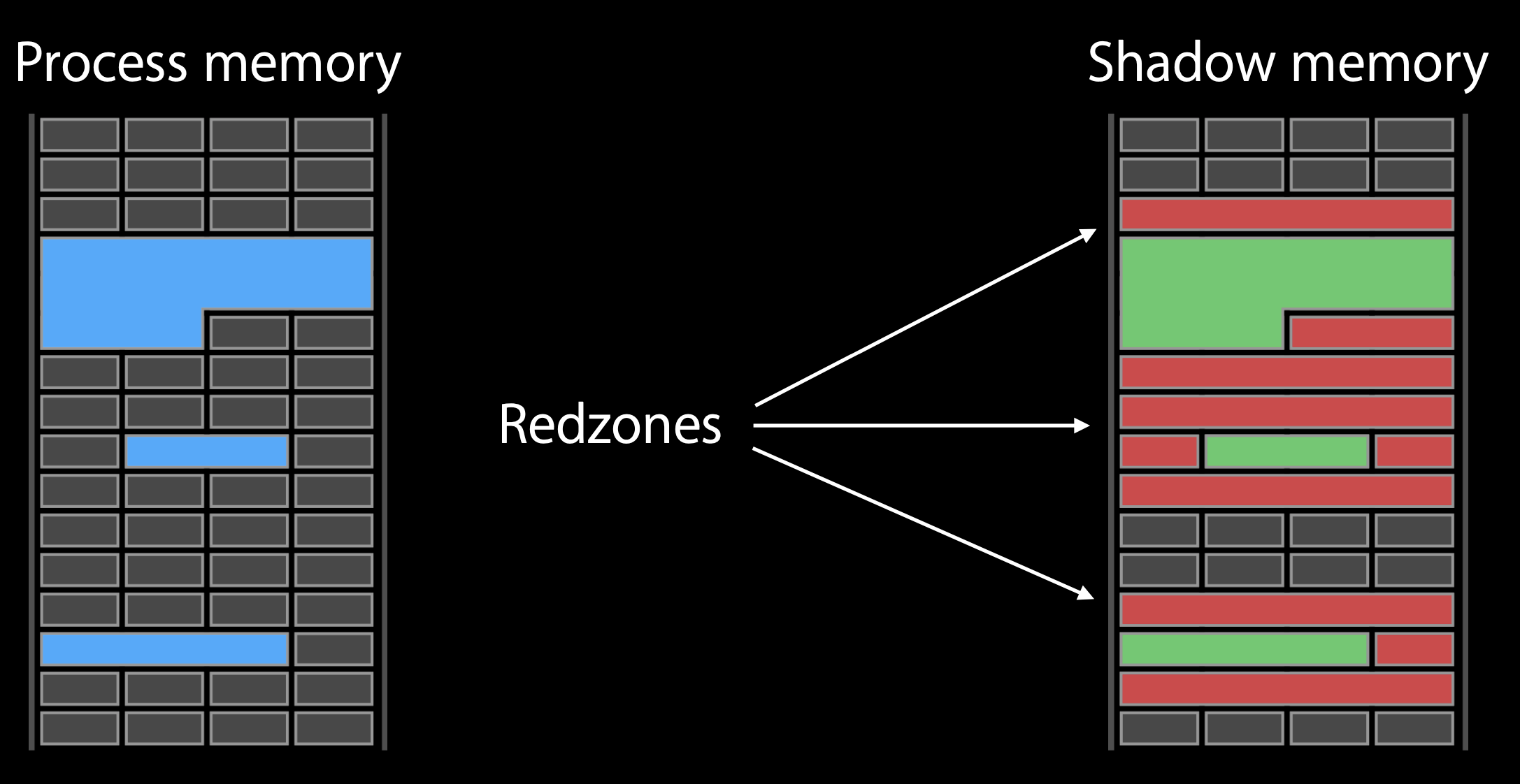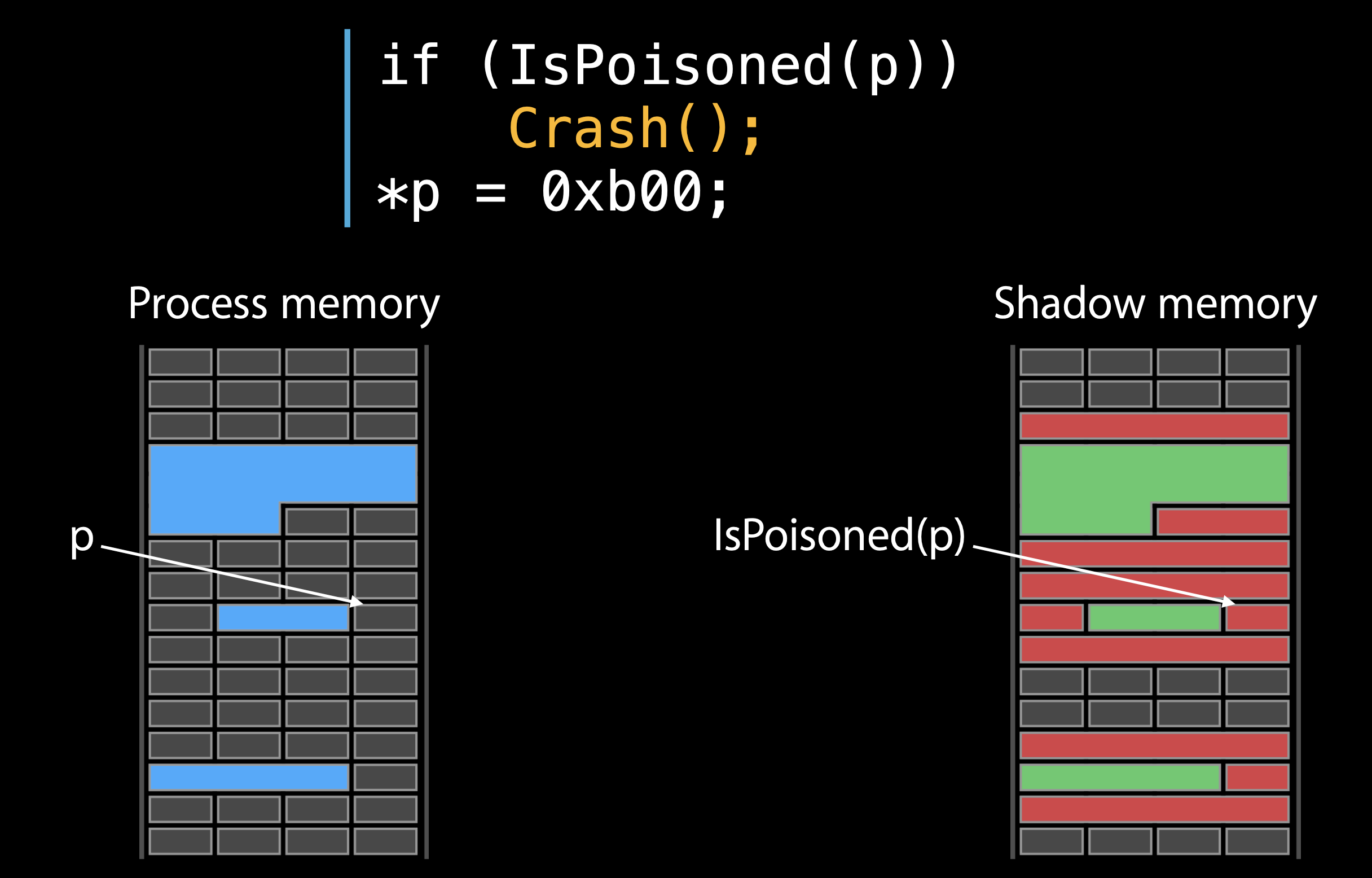模糊测试理论与工具实践 #
总览 #
模糊测试又称为fuzzing,是一种软件测试技术。其核心概念为自动产生随机输入到一个程序中,并监视程序异常,如崩溃、断言失败,以发现可能的程序错误。
举例: #
测试.c:
// gcc -o test test.c
#include <unistd.h>
int main()
{
char input[8] = {0};
read(STDIN_FILENO, input, 8);
if (input[0] == 'A' && input[1] == 'B') // (1)
*((unsigned int *)0) = 0xdeadbeef; // (2)
write(STDOUT_FILENO, input, 8);
return 0;
}
模糊器.py
import subprocess
target = './test'
inps = ['AA', 'BB', 'BA', 'AB']
for inp in inps:
try:
subprocess.run([target], input=inp.encode(), capture_output=True, check=True)
except subprocess.CalledProcessError: # (1)
print(f"bug found with input: '{inp}'")
# (output)
# bug found with input: 'AB'
内部架构 #
在执行时会因为不同的条件执行不同的程序码,而不同的条件主要if就是定义
if (a == 1 && b == 2)
puts("condition 1");
else
puts("condition 2");

IDA pro生产出来的指令级别的控制流图(CFG)

fuzzing流程大致可以拆成三个组件分别为:
1.种子选择、2.突变、3.覆盖范围。

举例:
测试.c
// gcc -o test test.c
#include <unistd.h>
#include <stdio.h>
int main()
{
char input[8] = {0};
read(STDIN_FILENO, input, 8);
if (input[0] == 'A') {
puts("AAA");
if (input[1] == 'B') {
puts("BBB");
if (input[2] == 'C') {
*((unsigned int *)0) = 0xdeadbeef; // bug
}
}
}
return 0;
}
测试器.py
import subprocess
import random
target = './test'
inps = ['A', 'B'] # 语料库
count = 1
while True:
inp = inps[0] # 种子选择演算法比较简单,使用最新的的种子作为下一个输入
inp += random.choice(['A', 'B', 'C']) # 变异演算会挑选出来的种子加上一个随机字元作为最终的输入。
del inps[0]
count += 1
try:
comp = subprocess.run([target], input=inp.encode(), capture_output=True, check=True)
if comp.stdout != b'':
inps.append(inp) # 如果有输出的话则代表此输入为有趣
except subprocess.CalledProcessError:
print(f"bug found with input: '{inp}'")
break
if count % 100 == 0 or len(inps) == 0: # 定期打乱语料库,避免变异效果不好导致输入无法取得新的覆盖范围
inps = ['A', 'B']
模糊器的好坏,通常是:
-
种子选择是否能挑出真正有意义的种子
-
变异的随机是否有效率
-
覆盖实现的方式是否会造成大量的开销。
AFL(American Fuzz Loop) #
– 简介 & 安装
以下是一些比较有名的开源模糊测试工具:
-
American Fuzzy Lop (AFL): AFL 是一个高效的模糊测试工具
-
libFuzzer: libFuzzer 是 LLVM/Clang 提供的一个模糊测试引擎,它可以轻松地集成到现有的代码中
-
Syzkaller: Syzkaller 是一个专注于系统调用接口的模糊测试工具,它可以自动生成各种系统调用序列,并对内核进行测试以发现漏洞和错误。
-
OSS-Fuzz: OSS-Fuzz旨在通过自动化模糊测试发现开源软件中的安全漏洞和错误。
Fuzz方式 #
AFL有两种fuzz途径:
- 开源软件:AFL软件进行编译的同时进行插桩,以方便fuzz
- 闭源软件:配合QEMU直接对闭源的二进制代码进行fuzz
环境搭建 #
演示
安装 #
Linux包管理(deb): #
$ sudo apt install afl++
源码编译安装 : #
下载源码自行编译:(推荐安装AFL++,AFl的话如果开ASAN可能有问题)
$ git clone https://github.com/AFLplusplus/AFLplusplus.git
$ cd AFLplusplus
$ make
$ sudo make install
AFL(American Fuzz Loop) #
– Demo & 原理
插桩(instrumentation) #
在保证原程序逻辑的完整性下,在程序中插入一些程序码来采集运行期间的执行状态。
int test_var = 0;
// original (1)
void b() { ...; }
void a() { ...; }
// instrumented (2)
void b() { printf("test_var: %d\n", test_var); ...; }
void a() { printf("test_var: %d\n", test_var); ...; }
特点: #
-
插桩的对象通常都具有相同的属性或类别涉及所有的功能、所有的基本块,比较少针对单一目标。
-
插桩的程序代码通常只有几行汇编代码,并且不会做太复杂的操作
-
在模糊器中,插桩被用来进行覆盖,那么记录多少程序码被执行到。
举例:
int had_exec[100] = {0};
void a()
{
had_exec[0] = 1; // (1)
// ...
}
void b() { had_exec[1] = 1; ...; }
void c() { had_exec[2] = 1; ...; }
int main()
{
// ...
if (had_exec[0]) // (2)
puts("function a had been called");
}
Demo #
演示
测试程序test.c
#include <stdio.h>
#include <unistd.h>
int main()
{
int a, idx;
char buf[100];
scanf("%d", &idx);
buf[idx] = '\0';
read(0, &a, 0x2);
if (a == 0xdead)
*(int *)0 = 0xdeadbeef;
return 0;
}
afl-gcc #
$ export AFL_USE_ASAN=1
$ afl-gcc -fsanitize=address -o test test.c
- 最后会我们的命令会变成这样
$ gcc -fsanitize=address -o test test.c -B ~/fuzz/AFLplusplus -g -O3 -funroll-loops -D__AFL_COMPILER=1 -DFUZZING_BUILD_MODE_UNSAFE_FOR_PRODUCTION=1
- 有趣的是
-B ~/fuzz/AFL,gcc 会尝试在这里寻找路径工具链中的汇编器来执行
$ ls -al ~/fuzz/AFLplusplus/as
$ lrwxrwxrwx 1 lidaxian lidaxian 6 Mar 29 14:53 as -> afl-as
afl-as #
-
afl-as首先会执行函数
add_instrumentation()做插桩,最后执行as做汇编。 -
做完插桩后会执行调整后的参数来汇编新的asm文件,最后产生的执行文件test即是有插桩的版本,简单用objdump就可以看到许多以__afl为前缀的函数:
$ objdump -M intel -d test | grep afl
119d: e8 1e 02 00 00 call 13c0 <__afl_maybe_log>
120d: e8 ae 01 00 00 call 13c0 <__afl_maybe_log>
1255: e8 66 01 00 00 call 13c0 <__afl_maybe_log>
12a1: e8 1a 01 00 00 call 13c0 <__afl_maybe_log>
afl-fuzz #
afl-fuzz -i seed-dir -o out-dir -m none ./test
-
-i - 存放测试用例的资料夹
-
-o - 搁置执行结果资料夹
-
-f - 从指定文件读取输入
-
-t - timeout,执行时间超过的话就会被kill掉
-
-m - 内存限制,执行时所能使用的内存体上限
-
-d - 跳过确定性,突变阶段跳过最初的处理
-
-n - 对没有插桩的目标进行模糊测试
Crash分析 #
out-dir/crashes目录下的内容是引发崩溃的输入
Sanitizer #
即使程序存在漏洞,也不一定会在执行到有漏洞的程式码时触发异常
char buf[100];
scanf("%d", &idx);
buf[idx] = '\0'; // (1)
然而即便会有out-of-bound write 的漏洞发生,但如果buf[101]对应到的地址正好没被使用到,那么fuzzer也不会感兴趣
常见的Sanitizer有:
-
AddressSanitizer (+LeakSanitizer)
-
ThreadSanitizer
-
UndefinedBehaviorSanitizer
-
MemorySanitizer
AddressSanitizer原理简介 #
这个内存检查是如何工作的?
左侧,蓝色区域是我们分配的内存在右侧
右侧,Redzones是中毒的内存

如果通过启用Address Sanitizer来编译可执行文件,则每次访问内存之前,都会有前缀指令来检查该内存是否为poisoned.如果是,Address Sanitizer 将生成如上所示的诊断报告。

下图显示该进程正在尝试访问中毒内存,并触发Crash并生成诊断报告。

堆对象分配 #
Address Sanitizer通过使用它自己的分配实现来替换默认的 Malloc 实现,该实现将对象彼此分开

堆栈变量 #
在两个堆栈变量之间插入一些红色区域,因此堆栈红色区域在运行时中毒

额外的开销 #
-
CPU 减速通常在 2 倍到 5 倍之间 正常情况下,CPU 速度减慢 2 倍至 3 倍。在某些极端情况下,他们的速度下降了 5 倍。
-
内存开销 2x–3x
-
AddressSanitizer 使用比本机运行更多的实际内存。确切的开销取决于分配大小。分配越小,开销就越大。
-
AddressSanitizer 使用更多的堆栈内存。我们看到增长高达 3 倍。
实战演示-libpng #
0x0.编译fuzz目标 #
libpng是开源的png解析库
$ wget https://nchc.dl.sourceforge.net/project/libpng/libpng16/1.6.36/libpng-1.6.36.tar.xz
$ tar xvf libpng-1.6.36.tar.xz
$ cd libpng-1.6.36
$ ./autogen.sh
$ CC=afl-clang CXX=afl-g++ ./configure --enable-static
$ make -j4
--enable-static: 用于生成静态库,fuzz开源库时会需要
0x1.准备环境(准备种子) #
获取官网提供的测试集作为输入
$ mkdir fuzz_in fuzz_out
$ cd fuzz_in
$ wget http://lcamtuf.coredump.cx/afl/demo/afl_testcases.tgz
$ tar xvf afl_testcases.tgz
0x2.开始fuzz #
$ afl-fuzz -i ../fuzz_in/png/full/images -o ../fuzz_out ../.libs/pngimage @@
../fuzz_in/png/full/images为afl测试集
../.libs/pngimage是编译出来的被测试程序
@@代表测试输入样本
0x3.报错处理(如果安装在系统上时) #
AFL测试时用到功能需要还没有开启
sudo su
echo core >/proc/sys/kernel/core_pattern
cd /sys/devices/system/cpu
echo performance | tee cpu*/cpufreq/scaling_governor
总结 #
-
使用AFL在linux上fuzz开源软件十分简单
-
大多数的lib/开源软件的源代码都是可以获取的
-
在编译时插桩是可行的
-
在Fuzz时要用ASAN,MSAN,UBSAN
-
有时最需要花费时间的过程是项目编译
-
缺失引用的第三方库(lib)
-
编译过程中的各种错误
-
不同项目不同的编译方法与各种选项
-
